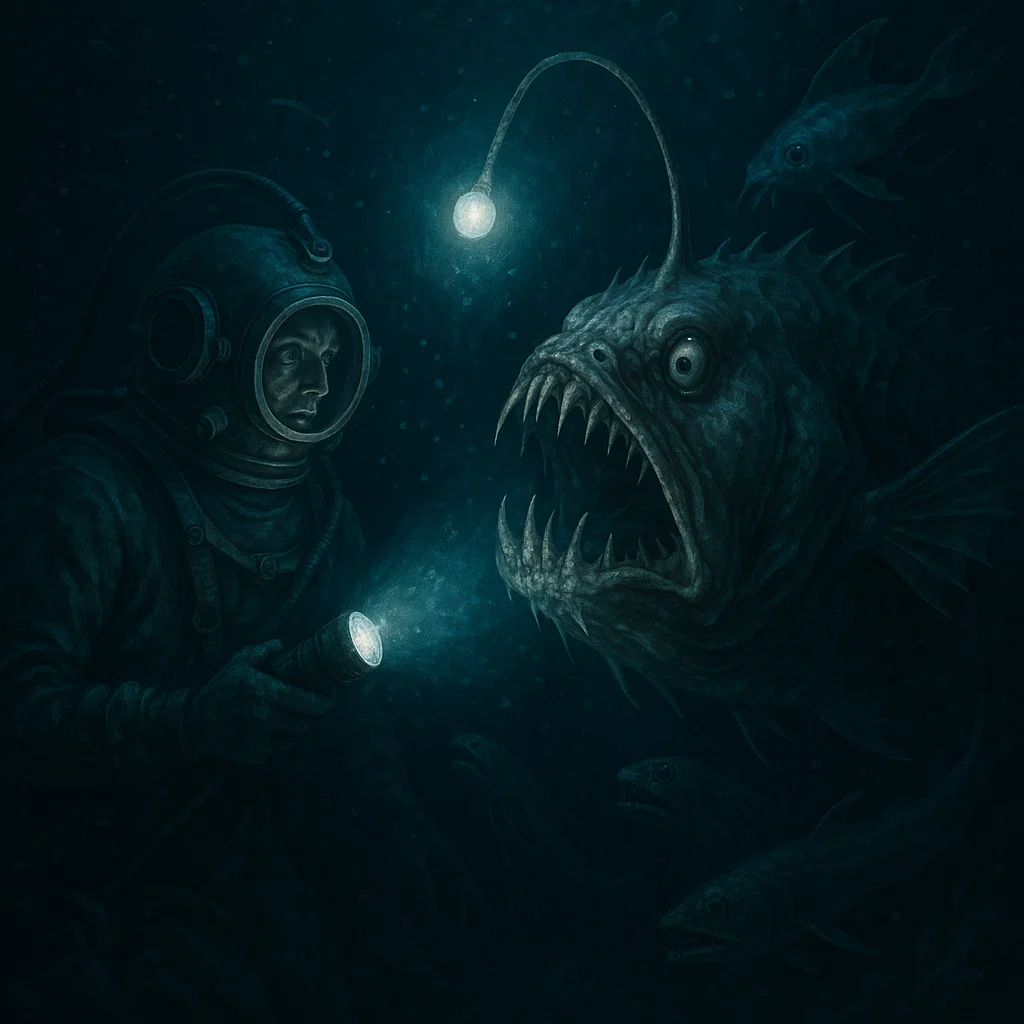The Mysterious Depths : Imagine a world where sunlight never reaches, where pressure could crush a submarine, and where life thrives in the most extreme conditions imaginable. This is the realm of deep-sea creatures, a vast, unexplored frontier teeming with incredible life forms that have evolved mind-boggling adaptations to survive. From glowing hunters to colossal giants, the abyssal zone holds secrets that continue to fascinate scientists and ignite our imaginations. Prepare to dive into the ocean’s most enigmatic habitat and discover the unique inhabitants that call it home.
What Defines the Deep Sea?
The deep sea is not a single, uniform environment but rather a series of zones defined primarily by depth, light penetration, and pressure. Below about 200 meters, sunlight rapidly diminishes, leading to the aphotic zone, where no photosynthesis can occur. Further down, in the abyssal zone and hadal zone, temperatures plummet to near freezing, and hydrostatic pressure increases to hundreds, even thousands, of times that at the surface. Food is incredibly scarce, often arriving as “marine snow” – detritus falling from upper waters. These harsh conditions have forced deep-sea creatures to develop truly extraordinary ways to exist.
Survival Strategies: Adaptations of Deep-Sea Creatures
Life in the deep sea demands specialized survival techniques. The creatures here have evolved fascinating adaptations to cope with the extreme darkness, immense pressure, and scarcity of resources.
Bioluminescence
Perhaps the most iconic adaptation is bioluminescence, the ability to produce light chemically. In a world of perpetual darkness, this internal light source is vital. Deep-sea creatures use bioluminescence for a myriad of purposes: attracting mates (like the male anglerfish following the light of the female), luring prey (the dangling “fishing rod” of the anglerfish), startling predators, or even as a form of camouflage (counter-illumination). The vampyroteuthis, or “vampire squid from hell,” uses elaborate light displays and ink-like bioluminescent clouds to evade threats.

Gigantism and Dwarfism
The deep sea exhibits a peculiar phenomenon known as deep-sea gigantism, where some species grow significantly larger than their shallow-water relatives (e.g., giant isopods, giant amphipods, the colossal squid). This is often attributed to slower metabolic rates in the cold, food-scarce environment, leading to longer lifespans and continuous growth. Conversely, some deep-sea species exhibit dwarfism, a strategy to minimize energy expenditure when food is extremely scarce.
Slow Metabolism
With limited food availability, many deep-sea creatures have evolved extremely slow metabolisms. They move slowly, reproduce infrequently, and can survive for long periods without eating. This energy-saving strategy allows them to thrive in an environment where every calorie counts. For instance, the Greenland shark, a deep-sea resident, can live for hundreds of years, making it the longest-living vertebrate.
Pressure Adaptation
The crushing pressure of the deep sea would obliterate most surface-dwelling organisms. Deep-sea creatures, however, have evolved remarkable ways to cope. Many lack gas-filled organs like swim bladders, which would collapse under pressure. Instead, their bodies are often composed primarily of water, making them virtually incompressible. They also produce specialized proteins and osmolyte molecules (like trimethylamine N-oxide, or TMAO) that stabilize cellular structures and prevent proteins from denaturing under extreme pressure. Their flexible, gelatinous bodies further aid in pressure distribution.
Giants of the Abyss: Iconic Deep-Sea Dwellers
The deep sea is home to some of the most bizarre and awe-inspiring creatures on Earth.
- Giant Squid/Colossal Squid: These legendary cephalopods are among the largest invertebrates on the planet, with eyes the size of basketballs. The Giant Squid (Architeuthis dux) can reach lengths of up to 13 meters, while the Colossal Squid (Mesonychoteuthis hamiltoni), though shorter, is much more massive, boasting the largest eyes in the animal kingdom. Much of their lives remain a mystery, observed only rarely in their natural habitat.
- Anglerfish: Famous for their bioluminescent lure, anglerfish are quintessential deep-sea predators. The female uses a fleshy growth on her head, tipped with light-producing bacteria, to entice unsuspecting prey. Males are often much smaller and parasitic, attaching to the female to obtain nutrients.
- Vampire Squid: Despite its name, this creature (Vampyroteuthis infernalis) is not a true squid but a unique cephalopod. It uses its cape-like webbing and bioluminescent arm tips to create dazzling displays for defense, making it appear larger and more menacing. When threatened, it can invert its cape to cover its body, creating a defensive “pineapple” shape.
- Tube Worms: Found around hydrothermal vents, these fascinating invertebrates (like Riftia pachyptila) can grow several meters long. Lacking mouths or digestive systems, they house symbiotic bacteria that convert chemicals from the vents into energy, a process called chemosynthesis.
- Dumbo Octopus: Named for the large, ear-like fins on its head that resemble the Disney character’s ears, this charming deep-sea octopus (genus Grimpoteuthis) flaps its fins to propel itself through the water, gliding gracefully near the seafloor.
The Unseen Worlds: Hydrothermal Vents and Cold Seeps
While much of the deep sea is a desolate expanse, specific geological features create oases of life. Hydrothermal vents are cracks in the seafloor where superheated, mineral-rich water spews forth. Far from sunlight, these vents support unique ecosystems based on chemosynthesis, where specialized bacteria convert hydrogen sulfide into energy, forming the base of a food web that includes giant tube worms, blind shrimp, and unique mussels and crabs. Cold seeps are similar, but instead of hot water, they release methane and hydrogen sulfide from the seafloor, also supporting chemosynthetic communities adapted to these chemical-rich environments.

Challenges and Future of Deep-Sea Exploration
Studying the deep sea is incredibly challenging due to the extreme conditions. Remotely Operated Vehicles (ROVs) and manned submersibles equipped with advanced sensors and cameras are essential tools. Despite technological advancements, vast areas of the deep ocean remain unexplored. Each expedition yields new discoveries, revealing species never before seen and expanding our understanding of life’s incredible adaptability. However, as human activities like deep-sea mining and bottom trawling expand, the importance of understanding and protecting these fragile, slow-growing ecosystems becomes paramount.
Conclusion
The deep sea is a testament to the resilience and diversity of life on Earth. Its inhabitants, from the microscopic extremophiles to the colossal squid, have mastered survival in one of the planet’s most hostile environments. As we continue to push the boundaries of ocean exploration, we gain invaluable insights into evolution, biology, and the interconnectedness of our planet. Protecting these mysterious depths is crucial for the health of our entire ocean and the life it sustains.
Learn more about ocean conservation efforts here!



